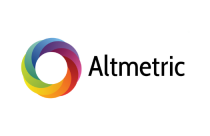Digital Classrooms: The Future of Education

The COVID-19 pandemic has changed our lives rapidly, and perhaps one of the biggest examples has been the shift to digital classrooms. Students and teachers who began their semesters eagerly at school have suddenly found themselves isolated and forced to utilize remote online learning. Furthermore, universities have taken their classes onto the web, while researchers have scrambled to implement creative solutions. Although online learning had gradually been gaining traction over the past decade, the coronavirus pandemic has forced a massive shift to occur in a very brief time period. This massive sudden shift has left many professors, students, teachers, and researchers feeling unprepared for their coursework. Some of the difficulties include obtaining the proper equipment, lack of support from administration, and simple technological problems. However, despite these difficulties, the pandemic may offer us an opportunity to transition to a more tech-friendly academic model. In this article, we will look at ways remote classrooms are helping students and teachers learn in new ways and offer some tips and tricks for smoothing the transition.
Educators and Students Forced to Embrace a Rapid Technological Shift
The spread of coronavirus has disrupted daily life around the world. Because the virus is so contagious and deadly, countries that lack the capacity to perform large-scale testing and contact tracing have been forced to shut down. In these countries, schools have been closed and people have been asked (or forced) to stay at home to prevent the spread of the virus. In these unique circumstances, teachers, professors, students, and researchers have had to turn to technology to continue learning.
Fortunately, online learning tools have developed greatly over the last two decades, making older, clunky message board systems like BlackBoard largely a thing of the past. Today’s students can enjoy interactive quizzes, presentations, and video lectures, and even participate in live classes through tools like Canvas, Zoom, Microsoft Teams, and Google Meet.
However, while plenty of technologies exists to allow online learning, a more basic problem is whether or not people can access this technology. Because the lockdowns happened so quickly in many places, faculty and staff at many learning institutions, especially universities, were caught unprepared. They have had to rapidly create and disseminate guidelines for how to hold online courses. Teachers and students have had to find access to internet and computer technology at home if they didn’t have it already. However, despite the awkward growing pains of this transition, overall many universities have successfully or somewhat successfully managed to implement online learning for the remainder of the semester. So how are they doing it?
Managing the Online Classroom: New Ways of Learning
Adapting traditional classroom lectures to an online format has posed multiple challenges to faculties and students alike. One unique thing about the COVID-19 pandemic is that everyone is facing similar challenges around the world at the same time. This means it is easier than ever to build online communities of support and exchange knowledge.
There are several ways that digital classrooms can assist teachers and students in continuous learning, as shared by experienced faculty. The first step is making sure that your classes recognize technical limitations- not every student is going to have a good enough setup to use Zoom or stream live lectures. Because of this, Kyungmee Lee, a lecturer in technology-enhanced learning at Lancaster University, UK, suggests limiting live classroom time in favor of pre-recorded lectures or self-directed learning. She suggests summarizing a 3-hour lecture into a 30-minute video. Lee also reminds teachers to check in with their students regularly, and encourages creating groups of students within a class. This way students can also have some social interaction similar to what they would in a traditional classroom setting.
Justin Reich, a digital-learning researcher at Massachusetts Institute of Technology in Cambridge, adds that teachers should also check in regularly with students to see what they do and don’t like about the class. In addition, teachers and students alike should learn about all the features of the technology they are using for online learning. A Harvard Business Review study recommends doing some kind of interactive activity with students every fifteen minutes or so during an online lecture to keep people engaged. Above all, students and teachers alike should recognize that everyone is struggling, and be kind to each other.
Tools, Tips and Tricks for Getting the Most from Digital Learning
In addition to the points about adapting classroom activities to the online realm above, we’ve rounded up a few other tools, tips and tricks to get the most of online technology and take your digital classroom to the next level.
- Programs like Zoom, privacy concerns aside, offer many useful functions such as breakout rooms, live polling, and a “raise hand” function. The last one can be particularly helpful for instructors who are struggling to get students to participate.
- Expand your horizons. In addition to traditional programs like Google and Zoom, educational programs like Nearpod let you make interactive slides and lets students ask questions during lectures, do polls, and other functions.
- Utilize social media! Hashtags such as #KeepTeaching, #AcademicTwitter, #PandemicPedagogy can connect you with other educators and researchers with ideas on how to manage classrooms.
While learning online presents new opportunities to learn technology and interact in new ways, it comes with some drawbacks as well. Many teachers find themselves putting in more hours than ever preparing their lessons, and students struggle to keep up with the materials. As mentioned before, unequal access to technology and the internet are fundamental barriers to distance learning for many. Finally, due to the sudden and disorganized nature of the move from traditional to online teaching, many issues in educational arrangements and institutions are being exposed. Whether this is part-time or adjunct professors being unsupported as they try to keep up or IT departments not having systems in place, digital learning remains a challenge for many. Regardless, it may be our only option for the foreseeable future as the coronavirus continues to threaten countless lives.
Has your institution switched to a digital classroom model? What tips and tricks do you have for online learners? Share your experiences in the comments below.









